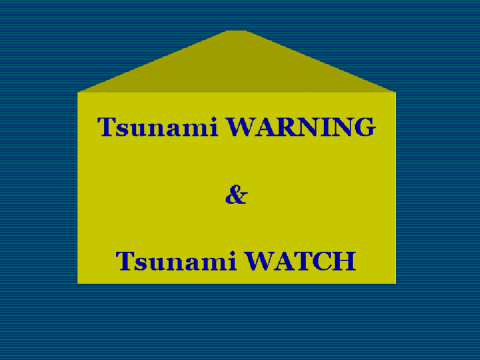| front |1 |2 |3 |4 |5 |6 |7 |8 |9 |10 |11 |12 |13 |14 |15 |16 |17 |18 |19 |20 |21 |22 |23 |24 |25 |26 |27 |28 |29 |30 |31|32 |33 |34 |35 |36 |37 |38 |39 |40 | 41 |42 |43 |44 |45 |46 |47 |48 |review |
 |
A Tsunami
WARNING means a dangerous tsunami may have been generated and could be
close to your area. Warnings are issued when an earthquake is detected that
meets the location and magnitude criteria for the generation of a tsunami.
The warning includes predicted tsunami arrival times at selected coastal
communities within the geographic area defined by the maximum distance the
tsunami could travel in a few hours. A Tsunami WATCH means a dangerous tsunami has not yet been verified but could exist and may be as little as an hour away. A watch—issued along with a tsunami warning—predicts additional tsunami arrival times for a geographic area defined by the distance the tsunami could travel in more than a few hours. The West Coast/Alaska Tsunami Warning Center and the Pacific Tsunami Warning Center issue watches and warnings to the media and to local, state, national, and international officials. NOAA Weather Radio broadcasts tsunami information directly to the public. Local officials are responsible for formulating, disseminating information about, and executing evacuation plans in case of a tsunami warning. Citation source: http://disastereducation.org/library/public_2004/Tsunamis.pdf |